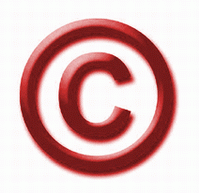Safe Harbors and Fair Uses
Lots of intellectual property, copyright watchers and the media have been waiting for a response from the Google-owned company.
Their response is a defense with two arguments and both should be familiar to those educators who pay attention to these issues.
 First comes the ever popular fair-use doctrine. I love fair use, but I also see it as the most often thrown out excuse for educators doing whatever they want with copyrighted material. When I was involved with the design of online course, we often heard those two words. " I always show that film in my face-to-face class, so why can't I rip the DVD & put it in the course management system? It's behind a password and it's for educational use. THAT's fair use."
First comes the ever popular fair-use doctrine. I love fair use, but I also see it as the most often thrown out excuse for educators doing whatever they want with copyrighted material. When I was involved with the design of online course, we often heard those two words. " I always show that film in my face-to-face class, so why can't I rip the DVD & put it in the course management system? It's behind a password and it's for educational use. THAT's fair use."
Is it? I doubt it, but we were never sure, or at least we couldn't point to exact cases that matched the situation at hand. In fact, it's hard to find ANY case to point to for clarification.
The fair-use doctrine does allow you to reproduce portions of copyrighted works "for purposes such as criticism, comment, news reporting, teaching, scholarship, or research."
But you will see examples that seem clear, but turn out to be cloudy.
Just recently, Shelley Batts, a Ph.D. student in neuroscience, wrote a blog post titled "Antioxidants in Berries Increased by Ethanol (but Are Daiquiris Healthy?)" about a study on the effects of alcohol that was published in the Journal of the Science of Food and Agriculture. She did a summary of the findings and, more importantly, included two illustrations from the article.
The journal demanded she remove the illustration & threatened a suit. She removed them.
But here's the interesting part to me. The student did her own versions of the illustrations (a chart & graph) and posted those versions. THAT, it seems, is legal. (Read more about it on the the student's blog)
The attention of the blogosphere had an effect. The journal publisher now says the talk of a lawsuit was a "misunderstanding" and says she can use the illustrations.
Google isn't counting on bloggers to come to their defense. Their second line of defense is the Digital Millennium Copyright Act - specifically, the "safe harbor" provision.
That provision holds that a website is not liable for any infringing material posted on it - as long as the site's operators
remove that material when asked to do so by a copyright holder.
Well, YouTube did that - with some of the copyrighted content. The question now may be how much and how fast, and who is responsible for finding the clips in violation. Should Viacom give Google a list or should Google scrub YouTube? In either case, that's a lot of work.
Comments
No comments